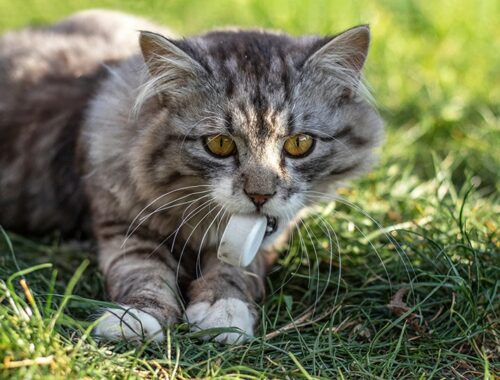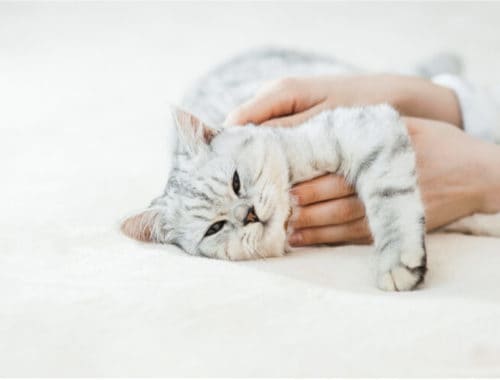Question: My cats no longer get along after getting into a fight. What is causing this and what can I do?
I have two cats. They have been living with each other for about 10 years. One of them noticed another cat outside and attacked my other cat. Now, my other cat is very aggressive after being attacked, and won’t leave the room. I’ve tried calming treats, the diffuser, and nothing seems to be working. Do you have any suggestions or reasons for their behavior, and how I can remedy it?
-Andrew
Answer:
Dear Andrew,
I am so sorry that your kitties don’t seem to be getting along anymore. I can’t imagine how hard that must be for you and them especially since you have had them for so long. It sounds like the initial reason for the fight was the cat outside that startled your cats.
You will want to be sure this doesn’t happen again, so it might be a good idea to put up shades in the windows where your cats might see another cat outside. Once there has been a disruption in the harmony and balance of your house, it can be tough for cats to adapt back to normal. After the initial fight, your cats’ relationship together has been slightly damaged. The good news is there are ways to remedy this.
My recommendations are to be patient and also seek help from your veterinarian. While you are waiting for your vet appointment, here are a few things you can try to get their relationship back on track.
How Do You Handle Aggression Between Cats that Used to Get Along?
Aggression between two cats that used to get along is a common problem that I see as a vet. The majority of the time this occurs because of some kind of stressor or change in the house. Anything can stress a cat out, and in this case, the outside cat caused your cats to get stressed and fearful. Consider trying the following steps.
1. Separate Your Cats Into Separate Areas of the House
For now, it is a good idea to keep your cats completely separated. If they are fighting and hissing at each other, this means they aren’t getting along and need a little timeout. Usually, I recommend several days to a few weeks. You will have to have separate food bowls, water bowls, and litter boxes for them in their separate areas.
2. Place Their Food Bowls Next To the Door
You will want to place their food bowls on either side of a closed door. This way, they can see and smell each other while they are still separated. Because they will be eating while they see and smell one another, this will help them associate each other with a positive thing which in this case is the food.
3. Switch Rooms
After a few days of separation, switch their spaces. This will allow your cats to have access to the scents of the other cat. At this point, you are trying to get them used to each other’s smell.
4. Crack the Door
After your separation period, try cracking the door just an inch or so and letting your cats sniff noses. If they appear calm, you may try opening it wider. If they still remain calm, they may be ready to be reintroduced together. You can also try giving a tasty treat during this reintroduction period, such as tuna juice or canned cat food. If they experience any signs of aggression towards each other, close the door.
5. Consult With Your Vet
If these steps aren’t working, it is a good idea to consult with your veterinarian. There are oral medications that can be temporarily given to help keep cats calm so they can be successfully reintroduced.
Final Thoughts
Aggression between two cats who previously got along is usually caused by stress. In this case, it was likely because of the outside cat that startled your cats. You should separate your cats for several days and slowly reintroduce them using the steps described above.
For more information about the reintroduction process, check out this helpful article from the ASPCA. In addition, it would be a good idea to schedule an appointment with your veterinarian. They may be able to give you other pointers and potentially prescribe temporary anxiety medications to help your cats get along better. Good luck with your kitties!
Sincerely,
Addie Reinhard, DVM
Disclaimer: Your use of the Ask The Vet feature is subject to the Ask The Vet Terms of Use. Content is for informational and educational use only and should not replace professional veterinary advice.
- See Also: Why Do Cats Like to Knock Things Over?
































